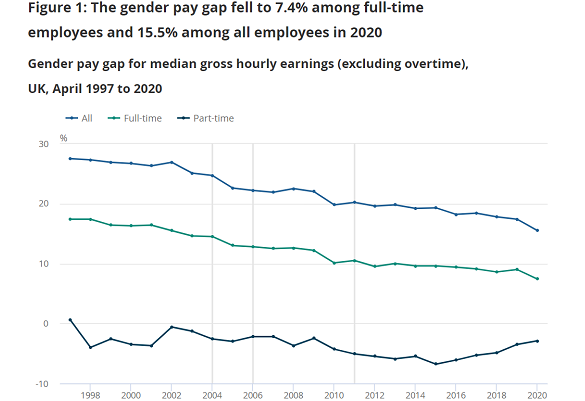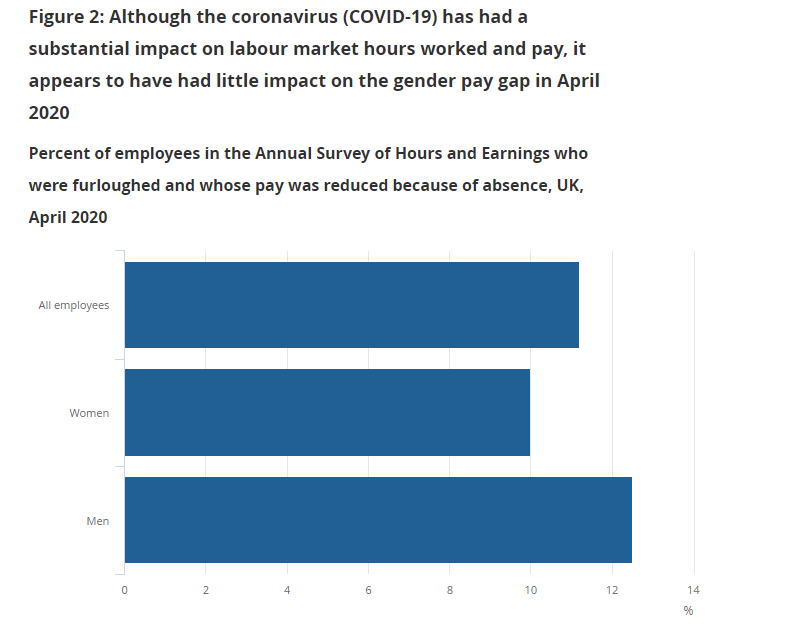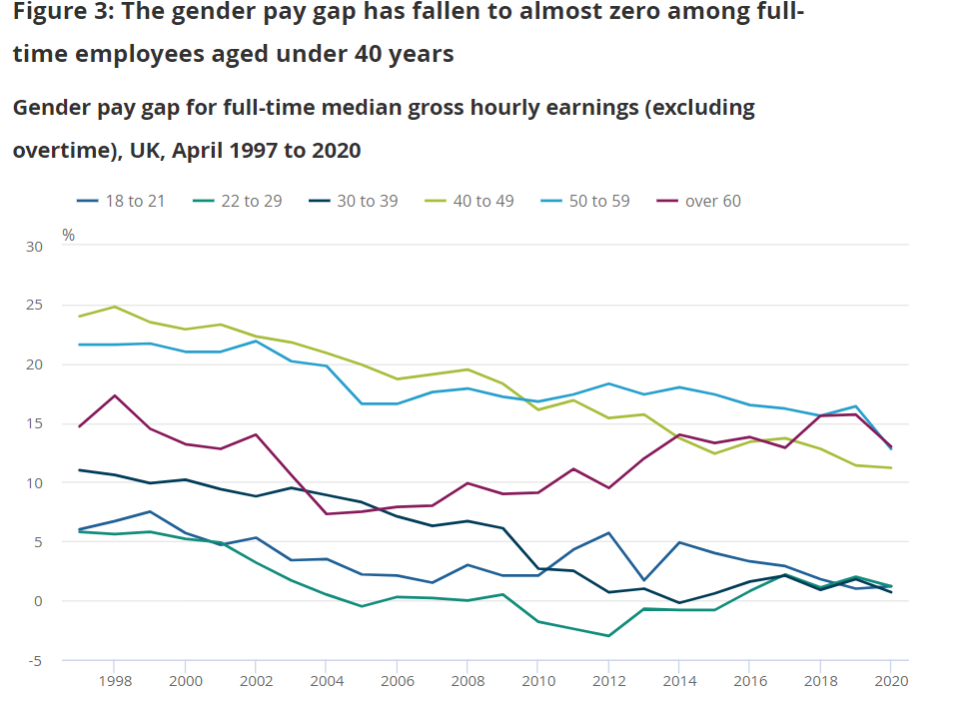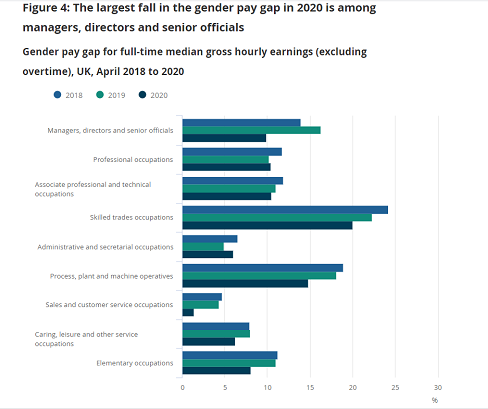UK's gender pay gap among all employees at 15.5% in 2020

The gender pay gap among all employees in the UK decreased to 15.5% in 2020, down from 17.4% in 2019.
Data released by the Office for National Statistics (ONS) showed that among full-time employees the gender pay gap in April 2020 was 7.4%, down from 9.0% in April 2019.

The report said a slightly higher proportion of men than women were furloughed with reduced pay in April 2020 due to the pandemic.
For both genders, the vast majority of these employees were in the lowest-paying jobs; the 10% lowest-earners were substantially more likely than the average employee to fall into this definition.
Watch: What are negative interest rates?
Its findings suggest that – because the gender pay gap is based on median pay – furloughing had a small impact on the gender pay gap, and the majority of the reduction in the gap is because of underlying changes in pay.

The gap remained close to zero for full-time employees aged under 40 years but was over 10% for older age groups.

Compared with lower-paid employees, higher earners experienced a much larger difference in hourly pay between the sexes, the ONS said.
There was a fall in the gender pay gap within the managers, directors and senior officials occupation group in 2020; this group has previously been identified as having a notable impact on the pay gap.

The pay gap was higher in every English region than in each of Wales, Scotland and Northern Ireland.
The gender pay gap in the UK has been declining slowly over time; over the last decade it has fallen by approximately a quarter among full-time employees and by just over one-fifth among all employees, according to the report by the ONS.
It added that since 2016, the gap has reduced among employees working in both smaller and larger (250 or more employees) companies.
The gender pay gap is calculated as the difference between average hourly earnings (excluding overtime) of men and women as a proportion of men’s average hourly earnings. It is a measure across all jobs in the UK.
A positive gender pay gap among full-time employees exists in each of the nine main occupation groups, but it has fallen since 2019 in all but two.
The two occupations that saw an increase are professional occupations, and administrative and secretarial; each experienced a small percentage increase to the gender pay gap estimate that is below that recorded in 2018.
The largest fall is among managers, directors and senior officials, from 16.3% to 9.9%, reflecting some signs of more women holding higher-paid managerial roles this year. This occupation group has the highest median pay of any occupation (£21.90 per hour, excluding overtime, compared with £15.07 among all employee jobs) and therefore has a strong impact on the gender pay gap.
The ONS added that estimates for 2020 are subject to some more uncertainty than usual as a result of the challenges faced in collecting data under government-imposed public health restrictions.
Watch: What is universal basic income?

 Yahoo Finance
Yahoo Finance 